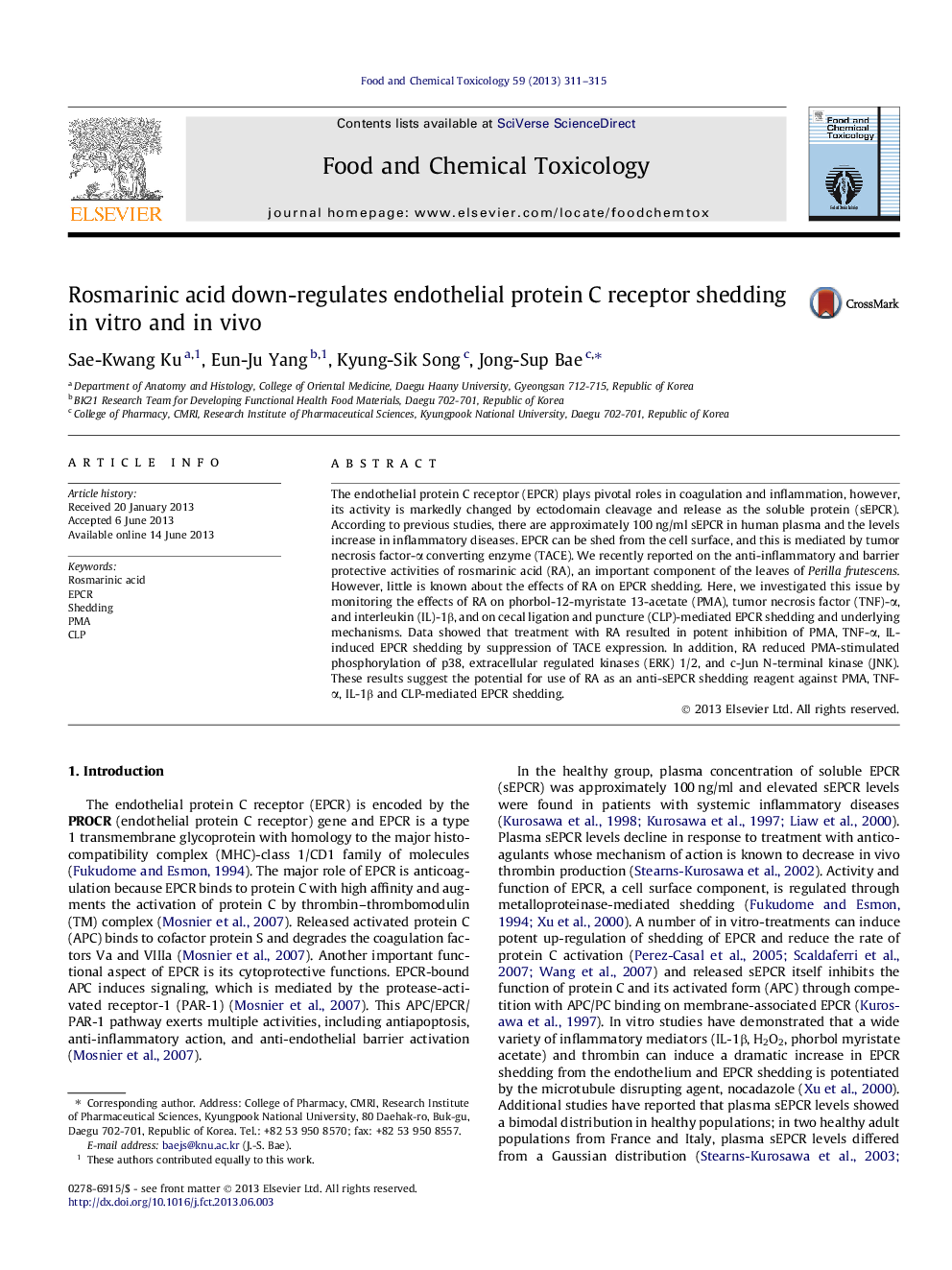| Article ID | Journal | Published Year | Pages | File Type |
|---|---|---|---|---|
| 5851041 | Food and Chemical Toxicology | 2013 | 5 Pages |
Abstract
The endothelial protein C receptor (EPCR) plays pivotal roles in coagulation and inflammation, however, its activity is markedly changed by ectodomain cleavage and release as the soluble protein (sEPCR). According to previous studies, there are approximately 100 ng/ml sEPCR in human plasma and the levels increase in inflammatory diseases. EPCR can be shed from the cell surface, and this is mediated by tumor necrosis factor-α converting enzyme (TACE). We recently reported on the anti-inflammatory and barrier protective activities of rosmarinic acid (RA), an important component of the leaves of Perilla frutescens. However, little is known about the effects of RA on EPCR shedding. Here, we investigated this issue by monitoring the effects of RA on phorbol-12-myristate 13-acetate (PMA), tumor necrosis factor (TNF)-α, and interleukin (IL)-1β, and on cecal ligation and puncture (CLP)-mediated EPCR shedding and underlying mechanisms. Data showed that treatment with RA resulted in potent inhibition of PMA, TNF-α, IL-induced EPCR shedding by suppression of TACE expression. In addition, RA reduced PMA-stimulated phosphorylation of p38, extracellular regulated kinases (ERK) 1/2, and c-Jun N-terminal kinase (JNK). These results suggest the potential for use of RA as an anti-sEPCR shedding reagent against PMA, TNF-α, IL-1β and CLP-mediated EPCR shedding.
Keywords
Related Topics
Life Sciences
Agricultural and Biological Sciences
Food Science
Authors
Sae-Kwang Ku, Eun-Ju Yang, Kyung-Sik Song, Jong-Sup Bae,
